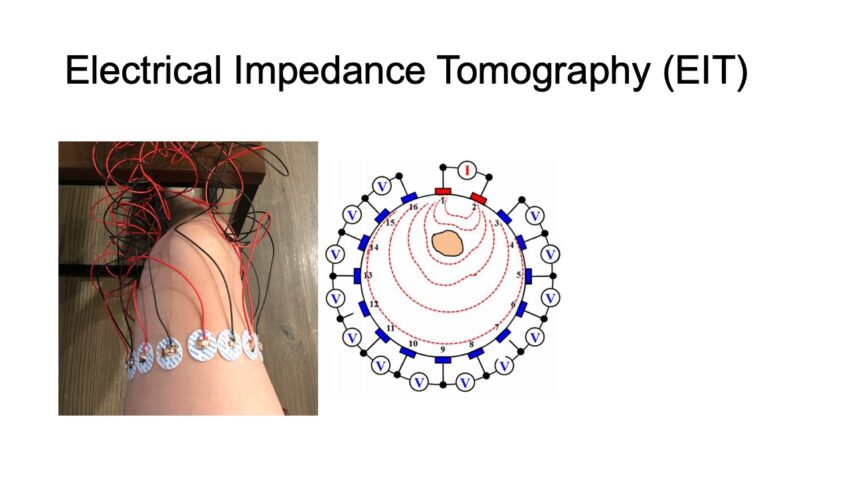As Electrical Impedance Tomography (EIT) continues to evolve, innovative approaches to data analysis are crucial for maximizing the potential of this non-invasive imaging technique. This article explores cutting-edge strategies and methodologies in the field of data analysis in Electrical Impedance Tomography, highlighting advancements that contribute to enhanced image reconstructions, improved accuracy, and broader applications.
1. Machine Learning-Based Image Reconstruction:
1.1 Neural Network Architectures:
Innovative data analysis in EIT involves the integration of machine learning, particularly neural network architectures, for image reconstruction. Deep learning models are trained on large datasets to learn complex patterns in impedance measurements, leading to improved spatial resolution and more accurate reconstructions.
1.2 Adaptive Learning Algorithms:
Machine learning algorithms are increasingly adaptive in EIT applications. They can dynamically adjust reconstruction parameters based on real-time data, optimizing image quality and reducing the need for manual calibration.
2. Dynamic Imaging and Real-Time Processing:
2.1 Temporal Analysis Algorithms:
Innovations in data analysis include temporal analysis algorithms for dynamic imaging. These algorithms capture changes over time, enabling real-time processing and visualization. This is particularly valuable in applications where continuous monitoring of physiological processes is essential.
2.2 Event-Driven Data Processing:
Event-driven data processing focuses on identifying and prioritizing significant events in the impedance data. This approach enhances the efficiency of data analysis by concentrating on critical moments, reducing processing time, and facilitating quicker response in time-sensitive scenarios.
3. Spectral and Multi-Frequency Analysis:
3.1 Frequency-Domain Reconstruction:
Advancements in data analysis techniques involve the exploration of frequency-domain reconstruction. By analyzing impedance data at multiple frequencies, researchers gain a more comprehensive understanding of tissue properties, leading to improved reconstructions.
3.2 Spectral EIT:
Spectral EIT goes beyond traditional impedance measurements, examining a spectrum of frequencies. This approach provides detailed information about the electrical properties of tissues, contributing to more accurate reconstructions and enhanced characterization of biological structures.
4. Statistical Shape Models and Prior Knowledge:
4.1 Incorporation of Anatomical Priors:
Innovative approaches integrate statistical shape models and prior knowledge about anatomy into the reconstruction process. By incorporating anatomical information, data analysis can enhance the accuracy and anatomical fidelity of EIT images.
4.2 Bayesian Inference Methods:
Bayesian inference methods are increasingly applied in EIT data analysis. These methods provide a probabilistic framework for combining prior knowledge with measured data, offering a robust approach to image reconstruction and uncertainty quantification.
5. Advanced Signal Processing Techniques:
5.1 Wavelet Transform Applications:
Wavelet transform applications in EIT data analysis facilitate multi-resolution analysis. By decomposing impedance signals into different frequency components, researchers gain insights into both global and local features, contributing to improved reconstructions.
5.2 Compressed Sensing:
Compressed sensing techniques aim to reconstruct images from a limited set of measurements. This innovative approach in EIT data analysis allows for reduced data acquisition time while maintaining image quality, making it particularly advantageous in dynamic imaging scenarios.
6. Challenges and Future Directions:
6.1 Interdisciplinary Collaboration:
Addressing challenges in EIT data analysis requires interdisciplinary collaboration. Bringing together experts in electrical engineering, computer science, and medical fields can foster the development of novel approaches and methodologies.
6.2 Validation and Standardization:
Future directions involve rigorous validation and standardization efforts for innovative data analysis techniques. Establishing benchmarks and protocols will ensure the reliability and reproducibility of results, promoting broader acceptance in the scientific community.
Conclusion:
Innovative approaches to data analysis are pivotal in advancing the capabilities of Electrical Impedance Tomography. The integration of machine learning, dynamic imaging, spectral analysis, and advanced signal processing techniques contributes to more accurate reconstructions and expands the potential applications of EIT. As technology continues to progress and collaborative efforts flourish, the future of EIT data analysis holds exciting possibilities for further refining imaging quality and unlocking new insights in biomedical research and clinical practice.

